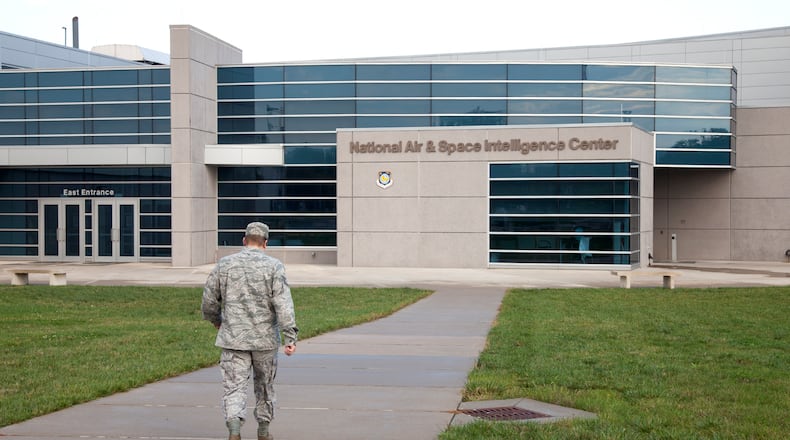No one is panicking. But U.S. Rep. Mike Turner, the ranking Republican on the House Armed Services Committee, believes NASIC’s place at Wright-Patterson should not be taken for granted.
RELATED: NASIC at risk in Space Command HQ search
“I wouldn’t classify (the risk to NASIC) as low,” Turner said in an interview. “I would say it’s going to need our constant focus.”
NASIC offers Air Force and political leaders intelligence and data on what foreign adversaries are doing in the domains of air and space. As the military command most focused on the space arena, the fear for some is that as Space Force grows, there could be some overlap or duplication of NASIC’s intelligence work that could lead to NASIC being shrunk or moved.
NASIC’s work “cuts across all of those missions,” said Jeff Hoagland, president and chief executive of the Dayton Development Coalition.
Space Force is the sixth and newest U.S. military branch, the first branch established since the creation of the Air Force in 1947.
RELATED: New Space Force will depend on Wright-Patterson missions
Last month, the Pentagon decreed that it will entertain bids from U.S. communities to serve as the headquarters of the U.S. Space Command — which is different than Space Force, but still allied and complementary to its overall mission. Space Force is not meant to engage in combat operations.
NASIC has grown steadily at Wright-Patterson, with its 4,000-plus employees among the base’s overall 30,000 military and civilian workers.
Its workforce has grown by 100 jobs a year for 15 straight years, noted Hoagland. And those are quality, high-paying jobs, he has often observed.
Turner points to public commitments to NASIC and its work from Defense Secretary Mark Esper and others.
“They have all committed that they believe actually that the future of NASIC is probably enhanced and even more important as we move forward with Space Force,” Turner said.
Still, he calls for vigilance.
“We’ve been active on this, and actively advocating, and I think we’re winning,” the congressman said. “But I think we’re going to have to be constantly diligent, or this could have a detrimental effect on NASIC.”
MORE: AF Museum prank: Real general's photo covered by fictional 'Space Force' character
Every substantial mission at Wright-Patterson and Springfield Air National Guard Base needs protection from time to time, Hoagland said.
“Sometimes it’s AFIT (the Air Force Institute of Technology), sometimes it’s AFRL (the Air Force Research Lab),” he said. “Now it’s NASIC.”
“With Space Force, it’s something we’re taking very seriously,” he added.
Elaine Bryant — a former squadron commander at NASIC and today an executive vice president for aerospace and defense at the Dayton Development Coalition — said NASIC’s position at Wright-Patterson simply works.
“There is a synergy between the air intelligence and the space intelligence work that is done at NASIC,” said Bryant, who retired from the Air Force as a lieutenant colonel. “And speaking for myself — I can’t speak for the 4,000 people there — in terms of working together and collaboration and that synergy, being co-located there at NASIC under one roof is very helpful to our national defense mission.”
Loren Thompson — a national defense analyst and founder of the Arlington, Va.-based Lexington Institute who is familiar with Wright-Patterson — doesn’t see immediate danger to NASIC’s place in Dayton.
“Most of what NASIC does is foreign air intelligence, not space intelligence,” Thompson said. “It wouldn’t make sense to move air intelligence to Space Command, and breaking up the organization would make even less sense.”
Given the small budget of Space Command and the “uncertain outlook for future funding,” NASIC is likely to stay intact at its current location, he added.
“One thing Space Command doesn’t need right now is to lose valuable expertise because people rooted in Ohio don’t want to move,” Thompson said.
About the Author

